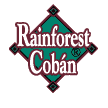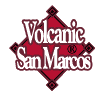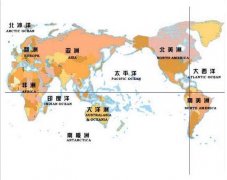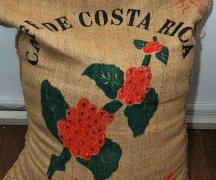Fine Coffee learns from the characteristics of Coffee in eight producing areas of Guatemala
Guatemala is a famous producer of high-quality Arabica coffee in Central America. The coffee from five volcanic producing areas and three non-volcanic producing areas is very unique and enjoys a high reputation in the international market.
Eduardo Ambrocio of Guatemala Coffee introduced Guatemala coffee to the audience at SCAA Houston in April 2010.
1. Acatenango Valley ®: The Acatenango Valley rises to 2000 meters (6500 feet) above sea level, is densely shaded and ecologically unique, and the nearby Fuego volcano erupts constantly, making its coarse, sandy soil rich in various minerals. Temperate sea breezes from the Pacific Ocean and seasonal climates allow this region's coffee to be sun-dried and processed by home-style traditional methods accumulated over the years.


AcatenangoValley ® cup profile: acidity, dry and wet aroma, pleasant, good body, clear and long finish.
Frag/Aroma Flavor Acidity Balance
Body: Body: Aftertaste: Overall: Overall (impression)
2. Antigua Coffee ®: Rich volcanic soil, low humidity, plenty of sunshine, cool nights, are the climate characteristics of Antigua coffee producing areas. The valley is surrounded by three volcanoes: Agua, Fuego and Acatenango. Tierra del Fuego is one of the three most active volcanoes in Guatemala, and its frequent eruptions bring ash that makes the soil of Antigua rich in minerals. Volcanic pumice in the soil helps to overcome Antigua's low rainfall by keeping moisture in the soil, and the region's dense shade protects coffee plants from occasional frosts.


Antigua Coffee ® cup profile is rich in moist aroma, well balanced, sweet and elegant in taste. 3. Traditional Atitlán ® is one of Guatemala's five largest volcanic coffee producing regions, and its soil is the richest in organic matter. 90% of the traditional Atitlan coffee is grown on the intensely fire-burning slopes of Lake Atitlan, where the daily breeze stirs the lake, an important factor affecting the microclimate of the region. This area has accumulated excellent planting and processing technology for a long time.


Traditional Atitlán ® cup profile: refreshing aroma, bright acidity, full body. 4. Rainforest Cobán ® Cobán is cloudy, rainy and cool all year round. The vast majority of rainforest Cobain coffee is grown in the region's distinctly undulating, foggy mountains, heavily influenced by limestone and clay from the Atlantic Basin. Cobain has two seasons: rainy and rainy.


Rainforest Cobán ® cup profile Distinct fresh fruit, balanced body, pleasant aroma. 5. Fraijanes Plateau ®: This area is volcanic soil, high altitude, abundant rainfall and variable humidity. Ash from Pacaya, Guatemala's most active volcano, provides important minerals for the region's soils. The dry season sunshine is abundant, although the morning fog, dew is big, but dissipates quickly. As a result, 100 per cent of the coffee in the region is sun processed.


Fraijans Plateau ® cup profile Bright, consistent acidity, full aroma, fine body. 6. Highland Huehue ®: Of the three non-volcanic coffee-producing regions in Guatemala, the Highland Huehue ® has the driest climate and the highest elevation. Dry hot winds from the Tehuantepec Plateau in Mexico protect coffee from frost and coffee can be grown to 2000 meters (6500 feet). Because of its remoteness, all coffee farmers have to process their own coffee, but fortunately there are so many streams in the area that small processing plants can be set up almost anywhere.


Highland Huehue ® cup profile: high acidity, pleasant, high body, with a wine finish. 7. New Oriente ®: Coffee in this region has been grown exclusively by small farmers since the 1950s, and today every farmer in the mountains is a coffee production unit. This region, once the most remote and poorest in Guatemala, is now showing signs of life. Rainy, cloudy, New Oriental ancient era is a volcanic area, soil volcanic metamorphic evolution, rich in minerals, nutrition balance, different from other volcanic coffee producing areas.


New Oriente ® cup profile: balanced taste, full-bodied, with chocolate flavor. 8. San Marco Volcanic San Marcos ®: San Marco has the hottest climate of Guatemala's eight coffee-producing regions, with rainfall of up to 200 inches (5, 000mm). The rainy season is earlier than in other areas, and coffee trees bloom earlier. As in other remote areas of Guatemala, volcanic San Marco coffee is grown and processed by small farmers. Due to frequent rains during the rainy season, most coffees are pre-dried in the sun and then dried in Guardiola dryers.


Volcanic San Marcos ® cup profile Aroma and taste with subtle floral notes, pronounced acidity and good body.
Important Notice :
前街咖啡 FrontStreet Coffee has moved to new addredd:
FrontStreet Coffee Address: 315,Donghua East Road,GuangZhou
Tel:020 38364473
- Prev

Fine Coffee introduces Colombian Premium Coffee
Flavor characteristics: sweet in acid, low bitterness, rich in nutrition, unique sour and mellow Colombian coffee is one of the few coffee named after the country in the world, and it is also one of the most famous coffee in the world. Colombia is located in the northwest of South America, and coffee is another pride of the people of this country besides football. The streets and alleys here are full of cafes, serving students.
- Next

Costa coffee Gala Minita coffee
Product name: La Minita, Costa Rica background: La minita Manor plants and selects coffee for its customers in a careful and responsible spirit. After screening and elimination from a total of 832000 pounds of raw beans, it finally selects 210000 pounds of the best quality coffee beans for consumers, which means that La minita only selects about 25% of the raw coffee beans in the process.
Related
- Detailed explanation of Jadeite planting Land in Panamanian Jadeite Manor introduction to the grading system of Jadeite competitive bidding, Red bid, Green bid and Rose Summer
- Story of Coffee planting in Brenka region of Costa Rica Stonehenge Manor anaerobic heavy honey treatment of flavor mouth
- What's on the barrel of Blue Mountain Coffee beans?
- Can American coffee also pull flowers? How to use hot American style to pull out a good-looking pattern?
- Can you make a cold extract with coffee beans? What is the right proportion for cold-extracted coffee formula?
- Indonesian PWN Gold Mandrine Coffee Origin Features Flavor How to Chong? Mandolin coffee is American.
- A brief introduction to the flavor characteristics of Brazilian yellow bourbon coffee beans
- What is the effect of different water quality on the flavor of cold-extracted coffee? What kind of water is best for brewing coffee?
- Why do you think of Rose Summer whenever you mention Panamanian coffee?
- Introduction to the characteristics of authentic blue mountain coffee bean producing areas? What is the CIB Coffee Authority in Jamaica?

